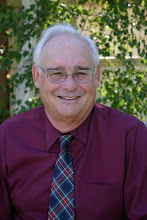
When Bill Thomas was chairman of the tax-writing House Ways and Means Committee, he thought too much emphasis was being placed on home ownership.
“If you can afford to buy a house, you are rewarded handsomely in a number of financial ways. If you can’t, you are punished because you pay rent. You can’t even subtract rent from your income tax,” said Thomas, who retired in 2006, after representing Bakersfield in Congress for 28 years.
So the concept that became the “American Dream” was that everyone should own a home, which will be a source of equity, an asset. Then these homeowners can borrow against their homes.
“And as we have seen, people have been put into homes that they couldn’t afford in the beginning and which they certainly could not afford once balloon payments kicked in,” Thomas said during a recent interview with The Californian. “There was a lot of money to be made on these subprime loans. Very clever people found ways to reinsure and monetize mortgages that probably had no value.”
Thomas has been appointed vice chairman of the Fiscal Crisis Inquiry Commission, which was created by Congress and President Obama to explain how “clever people,” such as Wall Street bankers and their real estate cohorts on Main Street, created worthless financial instruments that have rocked the nation’s economy nearly off its foundations.
While the consequences of the subprime mortgage industry are far-reaching and painful, the misplaced rewarding of debt is not confined to the real estate industry. Thomas noted the “debt versus equity” imbalance goes all the way back to the Enron scandal.
“It was cheaper to carry equity than debt. And you could hide debt with creative instruments that the regulators didn’t fully understand, in my opinion, and didn’t see until it was too late,” he said. “Enron was a prime example.
“If we had changed the tax code to be neutral on renting or owning, we would not have had the problems of subprime mortgages and all the rest. People could rent and feel good about it and have a deduction on their income taxes.
“We banned in the early 80s the deduction of personal interest credit on your income tax, but we did not build a fire wall between the debt in owning a home through mortgage and your ability to pull equity out of the home to spend the money on the RV you couldn’t get a tax deduction for,” he said. “We even had instruments that gave you a check each month for the increased equity, so they made sure you had no equity.”
There was the belief that the market value of property would go up every year. But if it went down, instead, and an owner had been pulling equity out of his home, he quickly found himself “upside down” – owing more than the home was worth.
“And there were cases around here, where Realtors and appraisers were not willing to wait for the quarter, or the year or two years to see the appreciation that always came,” said Thomas. “They began jiggering it around and flipping it in what amounted to illegal appraisal activity to drive the price up.
“The newspaper ran stories about people not following rules, ethical standards and laws. I am not talking about banks. I am talking about real estate people,” said Thomas. “A piece of property was worth $1 million and a few months later it was worth $1.4 million. Why? Because they paid the appraiser to reappraise the place, just like Wall Street paid for the Moody’s triple-A rating” on combined mortgages.
“Banks were not used to loaning money to people who didn’t have a job and could not meet the monthly payments. You could write a mortgage to someone who occupied the house, but they never made the first payment. That’s called a subprime mortgage and they were being written all over the place.
“Then you could combine them, get a certification, get a reinsurance policy and send it out [to investors]. When it started unraveling, the principle reinsurance agency was AIG,” said Thomas, noting Moody’s triple-A ratings on these combined mortgages were paid for in the same way some were paying for inflated real estate appraisals.
“You haven’t seen any real focus on the rating agencies in this first wave of reform coming through Congress. That has to be done,” said Thomas, noting that the role of rating agencies, such as Moody’s, in the ongoing financial scandal will be investigated by his commission.
“Look at these combined mortgages that carried a triple-A rating,” said Thomas. “AIG wrote a reinsurance deal on them, notwithstanding the fact that all the reinsurance that had been written was worth X times what AIG had in cash.
“AIG never thought it would have to pay off for those because they had triple-A ratings. So all of a sudden, you are sitting there with this thing and it isn’t triple-A. Some of it may be good, but some of it was obviously bad and nobody knew what it was worth. And it’s not buildings. It is artificially combined mortgages.
“So it isn’t easy to unravel. And we are still in the middle of that.”
[What would you tell Bill Thomas to investigate when his Financial Crisis Inquiry Commission kicks into "high gear" next month? Send your comments directly to John Hardisty at planningbeat@yahoo.com, or post them on this blog.]
A version of this article written by Dianne Hardisty first appeared in The Bakersfield Californian on Dec. 27, 2009.








